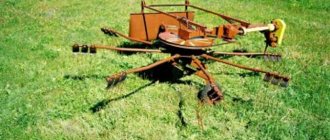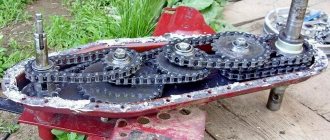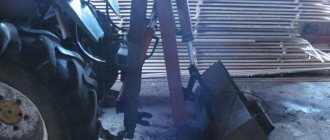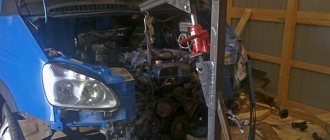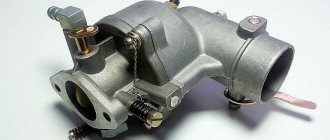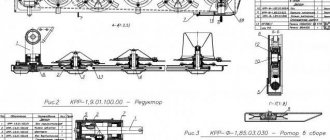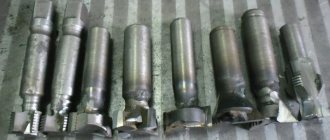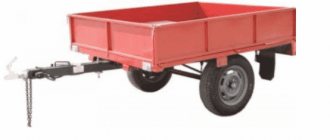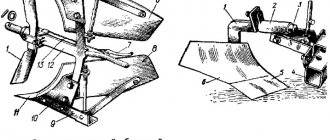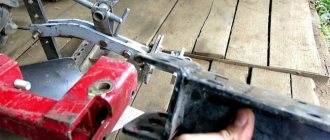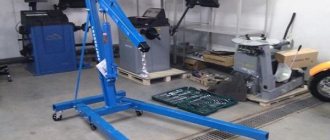Among farmers and gardeners, one of the pressing questions is how to make a rake for a walk-behind tractor with your own hands. This is a device that is far superior to a cultivator in terms of performance and convenience.
The walk-behind tractor will be useful not only for the farmer, but also for the owner of a small plot. This is quite an expensive technique. Therefore, many farmers try to make rakes for walk-behind tractors with their own hands. This will require a little time and a few auxiliary components.
A rake for a walk-behind tractor is an indispensable equipment for the village
Residents of rural areas know that collecting hay, freshly cut grass and leveling the ground is difficult work.
Today, a walk-behind tractor is capable of replacing manual labor with automatic one. To do this, you need the cultivator itself and special attachments for it, in this case a rake. Their necessity will be appreciated by people who keep pets or have a large area of land that needs to be cultivated.
It is easier for a city dweller to understand why additional equipment is needed using specific examples. After plowing, the ground is uneven, full of furrows, depressions and clods - it needs to be leveled. It is difficult to do this with your hands and a regular rake; you need to put in a lot of effort and use a heavy tool.
Trailed rakes can get the job done quickly and easily. And their dimensions are so diverse that they can be used both for ordinary gardening farms and for small farms.
A person faces a similar situation when it is necessary to collect mown grass or hay and roll it into windrows for transportation and storage.
Homemade rake for walk-behind tractor
Operating principle of various models
Operating principle of various models
The main working element of all types of tractor rakes is the teeth, which are made of high-quality steel, so they are not afraid of stones or other debris.
Models from different manufacturers have their own characteristics, such as, for example, the method of mounting the wheel hub: on roller bearings or nylon bushings; option for installation on a tractor of one model or another.
According to the nuances of their design, tractor rakes are divided into three subgroups:
- rotary (rotary) are designed from replaceable raking elements mounted on the right and left rotors, while some of them perform raking and turning functions, the second - ted and scatter the resulting windrows; rotors can work in pairs or one at a time; these are one of the most expensive models of this type of agricultural machinery;
- Wheel-finger rakes have, as a working mechanism, rotating disks with inclined (45 degrees) spring “fingers” (spokes), which grab the hay when the rake moves; the number of spokes on rakes and tedders for tractors and mini tractors is 4 dozen; the movement of the wheels is carried out due to the adhesion of the device to the surface of the field; very productive due to their well-thought-out design, however, they can only roll dry grass;
- The simplest design is for tractor transverse rakes - they are not intended for tedding, they only rake raw materials into windrows that are formed across the tractor travel; the wider the cultivated area and the more powerful the tractor, the better the tractor transverse rakes work; sections and teeth are mounted on hinges.
Possibilities of purchased and homemade rakes
Manufacturers offer a variety of types of attachments, as do craftsmen who create rakes for walk-behind tractors with their own hands. Before choosing a design, you should understand what work they are intended for.
In private farming, there is always work, at any time of the year, regardless of weather conditions. A rake is needed to perform the following tasks:
- leveling the land after plowing or planting crops;
- using them to create furrows for sowing;
- collection of mown grass;
- collection and rolling of finished hay;
- cleaning the area from weeds, branches, leaves.
- loosening the earth.
The selected equipment must be made of durable materials that are resistant to corrosion and do not require special care.
When making attachments yourself, craftsmen advise choosing high-quality steel with high strength values. After creation, it is best to treat the tool with anti-corrosion compounds and cover it with a layer of paint that prevents moisture penetration.
The rake's capabilities can make it a universal assistant
Review and types of mowers, lawn mowers and trimmers for walk-behind tractors
Many owners of personal plots, summer cottages, and farms have adapted to using mowers for walk-behind tractors instead of standard trimmers and lawn mowers. Naturally, it will be difficult to mow hectares of fields with such devices, but it is quite possible to tidy up 30-50 acres.
When choosing a mower, they take into account the specific work for which the device is planned to be used, the terrain of the area, the height and type of vegetation, and the expected working width when mowing.
Manufacturers produce rotary and segment mowers of various designs, which are optimally combined with various basic types of walk-behind tractors: Pubert, Caiman, Neva, Centaur, Ugra, Oka, Cascade, etc. Models of mowers from domestic manufacturers are in great demand.
Rotary mowers for performing the functions of a lawn mower and trimmer are also produced by other manufacturers under the following brands: Iron Angel, Forte, Bulat, Weima. The Chinese brand Veima has been on the market for a long time and has proven itself well. Weima mowers are in demand; according to reviews from owners, today's brand products are wear-resistant and of high quality, unlike Chinese crafts from the nineties.
Rotary mower under PTO (power take-off shaft)
This attachment provides a cutting width of 850 mm and a cutting height of up to 70 mm. The mower is capable of mowing not only soft grass, like a delicate lawn mower, but also coarse, dried vegetation. Installed at the rear of the walk-behind tractor on the power take-off shaft. Suitable for medium power walk-behind tractors.
Basic properties of attachments
A walk-behind tractor is a universal equipment for private households. A rake is not the only attachment for it; the kit may include lugs, an all-terrain attachment, a lifting mechanism for the attachment, flat cutters, mulchers, a press, a cultivator and several more complex devices.
Each of them is characterized by the presence of such properties as:
- strength (important for working with heavy soil in difficult conditions);
- corrosion resistance;
- ease of installation;
- Possibility to rise and fall for convenient control.
The rake is also characterized by the presence of a coupling device and an adapter on the walk-behind tractor for installation on a specific model.
Main types of rakes
Purchasing equipment with a motorized power unit is a profitable purchase. It saves your own effort and time, makes it possible not to spend money on seasonal hiring of workers, saving money for your own needs.
The range of attachments makes the equipment also universal - it can be used to perform various household tasks.
If we talk specifically about rakes, then there are three main types:
- rollers for collecting hay and grass;
- the tedder is designed for turning hay during the drying period;
- transverse for tillage.
Craftsmen make homemade equipment, focusing on the tasks that the owner faces.
Appearance of a standard tedder
Description
This turner attachment is designed to perform two tasks:
- tedding hay;
- raking it to one side.
The working part of this type of tractor-mounted equipment (Russian, Finnish, Polish or Turkish) in most cases consists of four or five wheels. They all rotate in the same direction in a plane that is perpendicular to the direction of movement of the mini tractor.
In this case, the outermost wheel is slightly ahead of the others, the second is slightly behind, the third is even further, then the fourth and fifth. They all rotate in the same direction.
Each wheel has many metal rods around its perimeter, which are slightly curved at the edge in the shape of a hook.
Tedder rake
In raking mode, work occurs as follows.
The wheels, according to the instructions, rotate in such a way that the very first wheel, located on the right (if you face the direction of movement), picks up the hay scattered on the surface of the ground with metal rods and throws it to the side so that it falls under the second wheel. Then in exactly the same way he throws it under the third, then under the fourth, then under the fifth. The last wheel throws the hay to the left, where it, having been collected from the entire working strip of the rake-tedder, is folded into one row.
There are several options for working:
- You can make one pass, then in the opposite direction, so that all the hay ends up in one row, where it will be much easier to collect.
- You can make three passes in one direction, gradually moving the collected hay in one direction. In this case, you will have to collect three times as much hay from one row.
There are other possible operating schemes that can be followed on the tedder rake in this mode.
In the tedding mode, the tractor driver rotates the frame with impellers 180 degrees. In this case, the rightmost wheel will be located at the rear. The hay he picks up will not fall on other wheels. The same can be said about each of the wheels.
Tedder rake at work
What is needed to create a homemade rake for a walk-behind tractor
A master who has skills in working with a grinder, saw, jigsaw and welding can create hand-held and mounted tools with his own hands without spending money on purchasing finished products.
To make a rake for a walk-behind tractor with your own hands you will need:
- base of a pair of durable wheels with metal discs and an axle connecting them;
- profiled pipe for the drawbar and rake mechanism;
- fittings or metal rods for teeth;
- rods for manufacturing or finished spring;
- hardware for connecting parts.
During the work, welding will be required to form the rake.
When choosing materials, pay attention to the fact that it is difficult to weld metals of different compositions without experience and knowledge of welding; it is better to choose pipes and rods from the same grade of steel.
An example of a drawing for self-production
A simple and convenient tool for raking weeds, hay and leveling the ground is shown in the following drawing. As you can see, the design contains the required components that are not difficult to manufacture independently.
Drawing of a rake for a walk-behind tractor, made by hand in a home workshop
In the drawing you can see:
- Drawbar.
- Pen.
- Transmission mechanism for raising and lowering.
- Strut.
- Rack.
- Teeth.
- Hub.
- Shaft.
- Wheel.
These simple elements are easy to manufacture and connect into an overall durable structure.
How does the turner work?
A special element for power take-off or a chain drive is installed on the tedder rake for walk-behind tractors, which is necessary to transmit rotation from the main motor to the rotating mechanism of this equipment. 5 pairs of wheels can work simultaneously, which will allow covering a large area for the required type of work.
Thanks to a special design involving wheels with teeth located along the rim, the farmer can pry up the grass blocks, turning them over, as well as collecting or raking everything behind him. This type of rake will allow a person to perform several different functions at once, due to the presence of the angle of the needle wheels. Combining tasks is accomplished by changing the direction of the torque.
The turner works according to a certain principle
For example, when one side of the unit rotates clockwise, and the other, on the contrary, all the hay or straw will be collected in the central track, which will make it easy to collect them in one pile in the future. If the rake should serve as an ordinary tool, but with a larger width, the angle of the fence should be changed by 180 degrees. Thus, the wheels will stand in one row and collect all garden debris from the surface. The principle of operation of the device is quite simple, which is why you can assemble the rake on the walk-behind tractor yourself according to a previously drawn up diagram.
The process of creating a rake with your own hands
Craftsmen create simple equipment in a few days if they have materials and drawings.
During the work process, it is important to pay attention to the following main points:
- axle manufacturing;
- installation of drawbar and rack;
- installation and configuration of amplifiers;
- creating a plank.
Making teeth is an equally significant part of the work, but it is not as difficult as it might seem. In skillful hands, creating elements with the same rounding will not be difficult.
To work you will need a drill, a welding machine, a grinder and consumables to create a structure that resembles a pitchfork.
Interesting video for making
We invite you to watch detailed video instructions, thanks to which you can make a high-quality rake for a walk-behind tractor from improvised means with minimal investment, a very interesting and, most importantly, useful video.
First stage - axis
Expert opinions agree on this issue - you need to purchase ready-made wheels. Moped wheels are well suited for these purposes (car wheels are too large), but if they are not available, homemade wheels can be used.
A part from grain plowing is suitable for the disc. A narrow metal strip is welded onto the existing disk, after dismantling the bearing.
DIY axle for walk-behind tractor
The wheelbase axle should look like a shaft connecting the wheels and causing them to move. To do this, a locking ring is welded on the inside; similarly, a hole for the stopper is made on the outside, into which a cotter pin of a suitable size is inserted. Next, a steel plate is welded onto the finished axle for attaching the rake.
The second stage - installation of the drawbar and rack
When the wheelbase is prepared, work begins on the drawbar and stand. They form the basis of the design:
- The main task is to create oblique supports by mounting them from metal squares.
- Making a drawbar from a profiled pipe.
- Bending the hook out of the pipe.
After working with the drawbar and stand, the master will have to resolve the issue with the reinforcement system.
Installation and configuration of the amplification system
The created structure should already have serious weight.
Its weak point is where it breaks due to the shoulder being too large. The disadvantage can be eliminated by adjusting the amplification system.
To create you will need:
- Finding the break point.
- Welding metal plates at the fracture site.
- Strengthening the racks with a strut connected to the drawbar.
- Manufacturing and connecting the structure to the rod.
Traction is a necessary condition to prevent the structure from falling to one side.
Creating a plank
Creating a strip completes the main work on the product. It is made from a one and a half meter piece of profiled pipe. Next, two segments with holes for the axle are connected to the racks.
After working with the racks, the bar is connected to the rod using a welded eyelet and connected to the springs.
We need to identify weak points and strengthen
how to plow the soil for garden beds | Topic author: Lyudmila
Tell me where to start? We bought a house with a small plot. the previous owners did not plant anything Ivan. But I want to make at least a small vegetable garden this year. Olesya is wondering when to start, what tools to buy.
Leonid A walk-behind tractor is of course easier. It’s virgin soil after all. And choose the roots properly, otherwise it will quickly grow back
Edward How the earth will dry out. Tools: bayonet shovel and rake.
Georgy It is best to plow with a walk-behind tractor - hire someone for a couple of rubles to plow the area you need Kirill. After digging, the earth rises a couple of centimeters.
Lay boards between the beds so as not to carry a large layer of earth/clay on your boots.
To scare away rodents, stick several sticks with homemade fans - windmills - into the garden. The vibration from the fan is carried well through the stick into the ground and repels small rodents such as moles or mice.
Vegetables grow well on land that has not been used for a long time. Every spring it is advisable to plow the soil with humus so that the soil does not become depleted.
To ensure that there are no weeds next year, in the fall the ground is planted with any grain, and in the spring it is plowed without waiting for the grains to grow and become dry Olga. Or in the fall they cover the ground with decaying matter so that all the weed sprouts cannot reach the sun, suffocate from lack of air and rot, and in the spring the matter will already be like dust.
For potatoes, it is useful to sow Ivan beans along with them. The rhizomes of beans accumulate nitrogen in the ground, which is very necessary for potato tubers.
It is good to plant peas in the ground where there is high humidity - it pumps out water like a pump.
It is not advisable to grow different crops such as carrots, onions, etc. in the same beds every year. Change the beds every year because one crop may draw one type of mineral from the soil, another crop may draw another type of mineral.
Never throw away tops from different plants, flowers, etc. - make a separate box on the site, into which during the summer and autumn you throw, press, and fill the tops with water. Next year you will get useful compost. It’s good to throw it on the beds and dig it up. In addition to tops, you can throw into this box: rotten fruits and vegetables, rhizomes, sawdust, manure - everything will rot.
What are boosters for?
During the drawing process, engineers can identify weak points in a structure. A master can only learn about the presence of weak points through experience.
In order not to check from your own experience how strong the product is, it is necessary to first strengthen possible weak points.
Among the places most susceptible to fracture are the following:
- middle of the racks;
- connecting the racks to the drawbar;
- spacer at the bottom of the rod.
After the strengthening work has been completed, the structure can be considered ready. All that remains is to lubricate all moving parts and attach it to the walk-behind tractor for testing.
All that remains is to attach it to the walk-behind tractor and you can go into the field
Russian-made walk-behind tractor "Neva" and its factory attachment
The Neva brand equipment was created specifically for Russian realities; it is not afraid of difficult conditions and is suitable for all types of work - be it cleaning, mowing or collecting hay. Its main feature is the presence of a universal adapter for connecting any attachment.
The Neva rake is often supplied complete with an MB-2 walk-behind tractor. They can also be purchased separately.
The factory attachment for the Neva walk-behind tractor is characterized by high quality assembly and materials; it can withstand heavy loads and operates for several years.
Also worthy of special attention is the “Sun” type rake, which is easily attached to the walk-behind tractor and greatly simplifies the work with cut hay.
Craftsmen who are capable of creating equipment with their own hands almost always make rakes for walk-behind tractors themselves. This approach saves money. In addition, it becomes possible to make attachments that are best suited for a specific motor cultivator.
How to make a rake for a walk-behind tractor or mini-tractor with your own hands is shown in the video below.
Types of tedders
The most commonly used type is a hay rake. To harvest it, you need a tool that performs tasks such as raking grass, turning and collecting hay into windrows. These universal tools are turners, which are divided into groups:
- by the nature of manufacturing of the working part;
- by type of traction;
- according to the method of formation of wolves;
- by type of fastening.
By type, such devices for tractors can be divided into two parts:
Tedders Sunshine for a mini tractor
- wheel-mounted (for example, Solnyshko tedder rake);
- rotary.
Wheeled ones usually have 3-5 built-in wheels, located obliquely from each other. This increases overall labor productivity. Using the mounted rake of the tedder increases both the gripping area and the thoroughness of raking the grass, and, accordingly, the speed of work as a whole. A simplified repair of the wheelbase is noted in Solnyshka - tractor tedders and rakes have interchangeable wheels secured by two bearings. The most popular among Solnyshko tedders are the GVK tedder rakes, which allow you to rake windrows on both sides at once and turn hay.
Among the advantages of the Solnyshko tedders are:
- low level of labor costs for servicing the mechanism;
- mounted tedder rake ensures longer service life;
- have a powerful traction drawbar and frame (more relevant to factory production);
- convenient transfer of the unit to the working or transport position, which is implemented through the hydraulic system by the tractor operator;
- Convenience of adjusting the pressure of the drive wheels.
Tedders for walk-behind tractor
Rotary tedder rake includes horizontally located disks (rotors) that are connected to the engine and rotate under the influence of the PTO. Metal pipes with fingers made of iron rods are attached to the rotors. Like tractor rakes, rotary tedders do their “duties” well, but they also have specialization. Their specific direction is collecting hay into compact windrows.
There are also cross tractor rakes. They belong to the mounted type of turners. Transverse devices are designed for raking freshly cut grass with a wide grip. On average, the grip of such instruments is 12-15 meters. to menu
